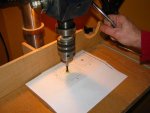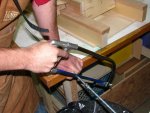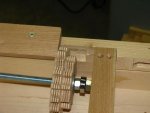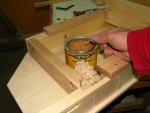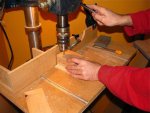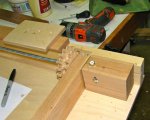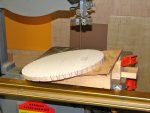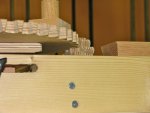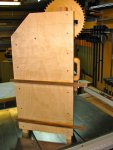Art Mulder
Member
- Messages
- 3,383
- Location
- London, Ontario
Not sure how long it's been since I started a build thread...
I have been fascinated by the Woodgears.ca website for years. Matthias Wandel builds fascinating gizmos, jigs, tools as well as interesting wood projects, and posts new items regularly.
In particular I have been thinking about building a version of his Screw Advance Box Joint Jig for a few years now. Not that long ago I decided that I would try and get started on it over this Christmas holidays as a present to myself.
If you want detailed build instructions, please go to his website and read his web page, and/or watch his instructional videos, and/or buy his plans -- they're quite inexpensive. My intent here is to just post some photos of my own build, with a focus on what I did different, or areas where I had particular challenges, or anywhere that I thought his plans needed a little elaboration. So I will NOT be posting detailed instructions or plans here, and if you are not familiar with his jig you will likely not understand what I'm doing!
As of now I have about 2 partial days into building this, and the holidays are about over. As well I have another project on the go with a deadline, so this may take a month or two to get through, I'll warn you!
So, Onward.
I have been fascinated by the Woodgears.ca website for years. Matthias Wandel builds fascinating gizmos, jigs, tools as well as interesting wood projects, and posts new items regularly.
In particular I have been thinking about building a version of his Screw Advance Box Joint Jig for a few years now. Not that long ago I decided that I would try and get started on it over this Christmas holidays as a present to myself.
If you want detailed build instructions, please go to his website and read his web page, and/or watch his instructional videos, and/or buy his plans -- they're quite inexpensive. My intent here is to just post some photos of my own build, with a focus on what I did different, or areas where I had particular challenges, or anywhere that I thought his plans needed a little elaboration. So I will NOT be posting detailed instructions or plans here, and if you are not familiar with his jig you will likely not understand what I'm doing!
As of now I have about 2 partial days into building this, and the holidays are about over. As well I have another project on the go with a deadline, so this may take a month or two to get through, I'll warn you!
So, Onward.

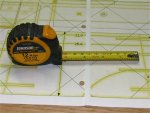

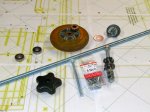
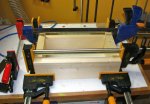


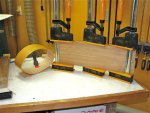
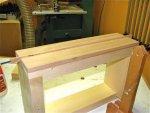
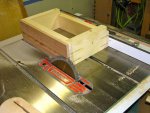



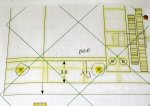
 )
)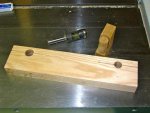

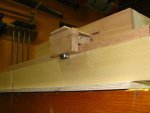
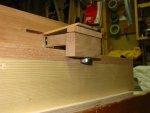
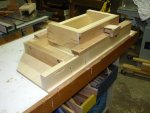
 +
+
